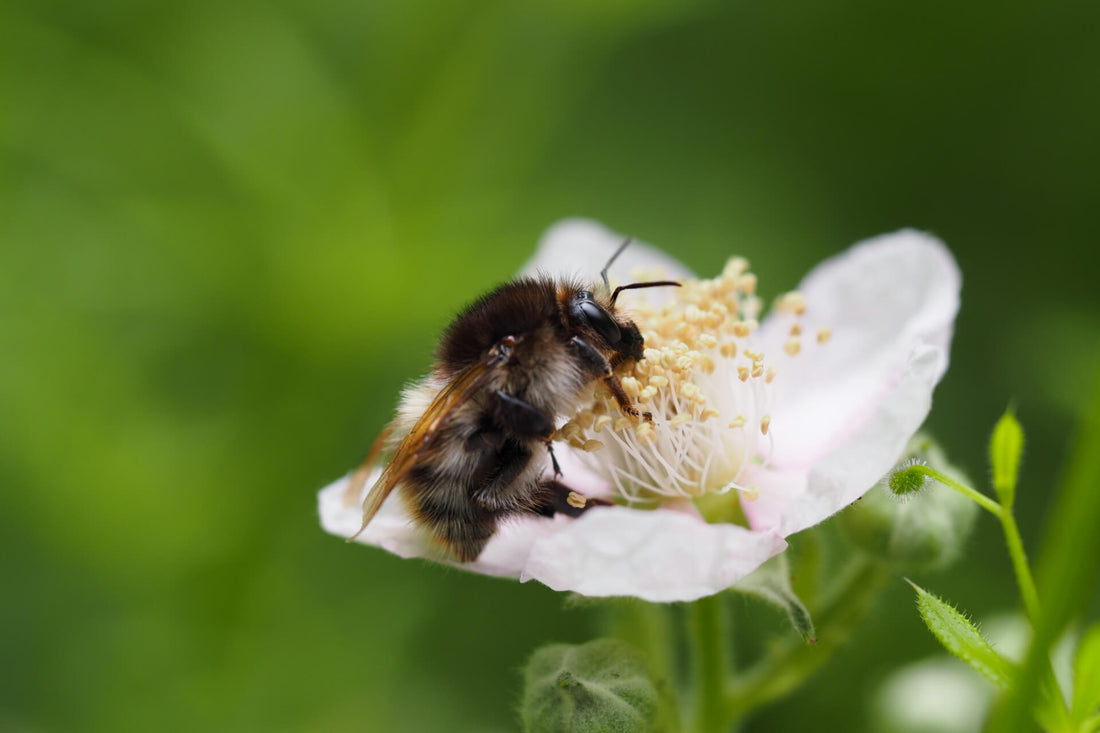Solitary Bee Hideouts
Have you ever wondered where bees live?
Some solitary bees live in the ground, while others prefer to be up high in wall cavities. Honey bees are different again and have hives.
So, what are the differences in their nesting habits?
The Different Kinds of Bee
If you are an avid bee enthusiast or have been with us at Beevive for a while, you have probably heard of social and solitary bees.
We like to think of social bees as the 'extroverts' of the bee family. Social bees work in colonies with 'worker' bees to get the job done. Some examples of Social bees are honey bees and some bumblebees.
These bees make honey in varying amounts and will likely sting you if provoked.
What are Solitary Bees?
Solitary bees, however, are the non-swarming and non-aggressive fuzzy friends, as the RSPB tells us.
They live alone and focus on building their nests for their eggs. Because they have no honey to protect, they are also safe around pets and children. Some examples of solitary bees are leafcutters, masons, and carpenter bees. Some prefer ground-nesting, while others like to be the eye in the sky.
Let's find out who's who!
(You can find more information about the types of bees on our Bee ID page.)
Ground-Nesting Solitary Bees
These bees love mud pies...
 ground nesting bee
ground nesting bee
 above ground nesting bee
above ground nesting bee
Ground-nesting bees make up the most significant proportion of solitary bees at 70% of the solitary bee world, with 30% of the rest preferring cavities for their homes.
How Can You Protect Ground-Nesting Bees?
You can help them by:
- Leaving areas of fallen leaves until the springtime.
- Avoid jumping into these leave piles this Autumn!
- Leaving other soil areas of the ground untouched.
- Avoiding using mulch in your garden.
- Mulch contains dead plant material but can also include rocks/gravel, plastic sheeting and other inorganic materials. Mulch stops them from digging in the ground!
- Choosing pesticide-free options for your garden pest control.
Cavity-Nesting Solitary Bees
The tree-house equivalent of the solitary bee!
 cavity nesting bee
cavity nesting bee
 cavity nesting bee
cavity nesting bee
Cavity-nesting bees require holes or ideally dry hollow tubes for their eggs. Inside, the female bee lays the male bees nearer the tube/wall cavity entrance and the females near the back. She also provides nectar and pollen for them so they have food stores when they hatch.
How Can You Support Cavity-Nesting Bees?
The best way to support solitary cavity-nesting bees is by creating a safe space to lay their eggs.
- You can do this by making a DIY bee hotel with bamboo tubes.
Or
- Buying one ready-made.
We suggest placing the bee hotel near bee-friendly flowers for food and securing it well to a wall or fence facing south/southeast.
For further information, you can learn how to safely change your nesting tubes or how a bee hotel works.
Thank you for supporting our bees as they pollinate planet Earth for us!


